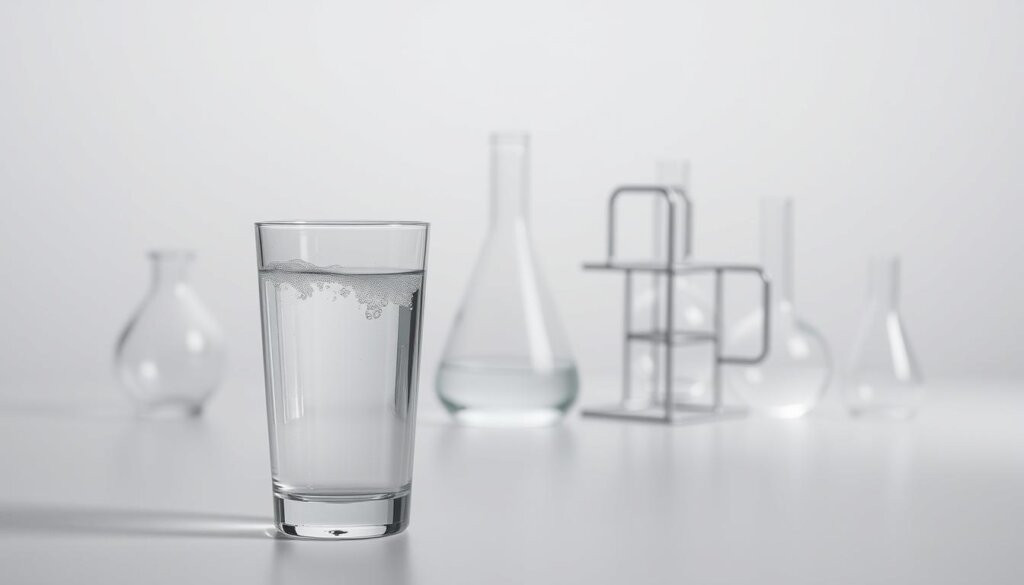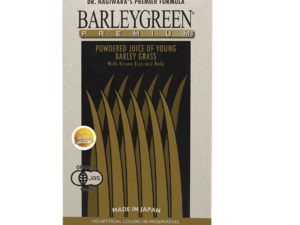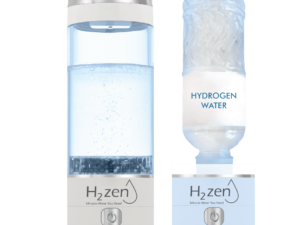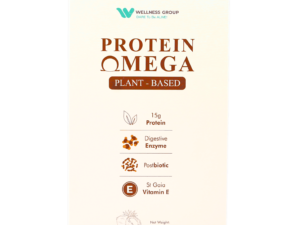Surprising fact: a recent preclinical review found long-term exposure to molecular hydrogen changed liver metabolism and lowered typical enzyme markers in rats by measurable amounts.
The opening of this article explains what the tiny gas is, how hydrogen-rich water is produced, and why the organ often shows early response in studies.
Readers in Malaysia will get clear, practical notes on delivery methods, device checks, and when to seek medical advice. The piece compares drinking to inhalation and saline injection, and it highlights mechanisms such as selective antioxidant action and mitochondrial protection.
Wellness Group offers local guidance. Contact via WhatsApp +60123822655 during business hours: Mon–Fri 9:30 am–6:30 pm, Sat–Sun 10 am–5 pm. This short guide sets expectations about benefits, limits, and safety across fatty changes, perioperative care, and supportive oncology use.
Key Takeaways
- Mechanism: molecular hydrogen shows selective antioxidant and signaling effects that may protect the organ.
- Drinking a hydrogen solution is one delivery route; inhalation and saline are alternatives with different profiles.
- Evidence includes animal trials and early human studies with enzyme level trends and metabolic shifts.
- Local support in Malaysia is available via Wellness Group; WhatsApp +60123822655 for device advice.
- Safety and individual diseases matter — consult professionals before starting any treatment.
At a Glance: The Ultimate Guide to Hydrogen Water and Liver Health in Malaysia
This section gives a compact summary of delivery options, reported effects, and the trials that matter to Malaysians. It highlights why the liver — a highly perfused, metabolically active organ — often shows early responses to molecular hydrogen exposure.
Delivery routes: Drinking HRW, inhalation, and hydrogen-rich saline (HRS) differ in logistics and tissue exposure. The liver tends to accumulate more exogenous hydrogen than many organs, which may explain early enzyme and metabolic shifts seen in studies.
Reported effects: Early human and pilot trials report improvements in oxidative stress markers, inflammation modulation, quality of life, and favorable enzyme trends. Most authors call for larger randomized trials in NAFLD, chronic hepatitis B, perioperative care, and radiotherapy support.
- Practical note: Typical routines in Malaysia can include daily HRW sipping or clinical inhalation sessions, depending on goals and access.
- Safety snapshot: Early data show good tolerability at common concentrations, but clinicians advise individualized plans.
- Metabolic role: Molecular hydrogen may support mitochondrial function and redox balance, which ties into metabolic syndrome and fatty changes common in Malaysia.
| Context | Delivery | Early Findings |
|---|---|---|
| NAFLD / metabolic disease | HRW drinking, inhalation | Reduced oxidative markers, modest enzyme trends |
| Chronic hepatitis B | HRW, adjunctive use | Lower oxidative stress, improved patient reports |
| Radiotherapy / perioperative care | Inhalation, HRS in clinical settings | Better QOL scores, protective enzyme patterns |
Next steps: Malaysians seeking tailored advice can contact Wellness Group on WhatsApp +60123822655 (Mon–Fri 9:30 am–6:30 pm; Sat–Sun 10 am–5 pm) to discuss device options, local availability, and personal suitability.
What Is Hydrogen Water and How Is It Made?
This section explains how enriched drinking solutions are produced and why dissolved gas levels matter in clinical studies.
Key difference: hydrogen-rich water contains dissolved molecular hydrogen, while regular drinking water does not carry that elevated gas content. The dissolved species is the active element linked to reported liver effects in preclinical and early human work.
Common production methods
Two main methods create hydrogen-rich water. One uses high-pressure dissolution to drive the gas into liquid and achieve supersaturation.
The other is the magnesium reaction: Mg + 2H2O → Mg(OH)2 + H2. This generates hydrogen in the bottle and is popular in portable devices.
Practical points
- Hydrogen concentration matters — benefits depend on actual dissolved level at the time of drinking.
- Studies often used daily volumes of 1,000–1,800 mL as a treatment routine over weeks to observe enzyme and oxidative marker trends.
- Hydrogen content can escape quickly; seal containers, drink soon after production, and follow device guidelines.
- Device help in Malaysia: WhatsApp Wellness Group at +60123822655 during open hours for verification tips and local options.
“Verify concentration before relying on any regimen; measured levels guide consistent use and better interpretation of outcomes.”
How Hydrogen Works in the Body: Antioxidant and Anti-inflammatory Basics
Below we unpack the basic biochemical actions that link a mild therapeutic gas to reduced inflammation and improved metabolism.
Selective scavenging of hydroxyl radicals and peroxynitrite
Molecular hydrogen targets the most damaging reactive species, such as hydroxyl radicals and peroxynitrite, without blocking normal signaling molecules.
This selective action lowers markers like MDA and can raise enzymes such as SOD, easing overall oxidative stress in the organ.
Signal modulation, cytoprotection, and mitochondrial effects
The agent modulates pathways including NF-κB and JNK/ERK, shifting cytokine profiles (IL-6, IL-10, TNF-α) toward reduced inflammation and less apoptosis.
It also supports mitochondrial health and mitophagy (e.g., FUNDC1-dependent pathways), which helps maintain energy and prevent cell loss.
NADP/NADPH redox pathways and metabolic implications
Long-term animal data show metabolic remodeling with changes in the NADP/NADPH axis, higher acylcarnitines, and increased acetoacetate — signs of promoted fatty acid oxidation.
These shifts explain why some trials report improved enzyme trends and symptom relief, though individual responses vary by disease stage and exposure levels.
Practical note: mechanisms overlap whether one uses HRW, inhaled hydrogen gas, or hydrogen-rich saline, but tissue exposure and outcomes depend on delivery and concentration.
For device checks and local guidance in Malaysia, readers can consult Wellness Group via product and device advice.
Is hydrogen water good for liver?
Clinical and animal work to date points to supportive liver outcomes when people use hydrogen-enriched drinking regimens alongside standard care.
The strongest signals come from preclinical injury models such as acetaminophen toxicity and ischemia‑reperfusion. In those studies, survival improved, IL‑6 fell, JNK activation was limited, and regeneration markers rose.
Early human reports echo supportive effects. Pilot trials in chronic hepatitis B and in patients receiving radiotherapy showed better oxidative stress markers and improved quality of life without harming tumour control. Small NAFLD trials reported reduced fat accumulation on imaging.
- Supportive benefits: calmer inflammation, lower oxidative markers, and favorable enzyme trends in select studies.
- Not a cure: this approach complements medical treatment; it does not replace standard therapy.
- Where studied: fatty liver disease, chronic viral disease, perioperative protection, and oncology support.
- Practical tip: consistency over weeks matters and clinicians should monitor levels and meds.
Patients with preexisting liver disease should coordinate any new regimen with their healthcare team.
Malaysian readers seeking tailored dosing, device selection, or expectation‑setting can contact Wellness Group via WhatsApp +60123822655 during business hours.
Delivery Methods Compared: Drinking HRW, Inhaled Hydrogen, and Hydrogen-Rich Saline
The following notes map bioavailability, timing, and typical clinical uses of each delivery option. They help readers pick a route that matches goals, schedule, and access in Malaysia.

How each route reaches the body
Oral HRW delivers dissolved hydrogen via the gut. It is convenient for daily routines and gives steady systemic exposure over hours.
Inhalation uses a mask, cannula, or chamber to expose airways to hydrogen gas. This gives faster peak levels and is common in acute or monitored care.
Hydrogen‑rich saline (HRS) provides precise dosing by injecting saline saturated under pressure. Clinicians use it perioperatively or in trials where exact levels matter.
Choosing a route in practice
- Daily wellness: HRW suits chronic metabolic support and home use.
- Hospital care: Inhaled hydrogen offers rapid exposure during acute events.
- Controlled dosing: HRS fits surgical protection and clinical protocols.
“Route, timing, and concentration shape tissue distribution and peak level dynamics.”
| Route | Pros | Typical use |
|---|---|---|
| HRW (oral) | Easy at home, steady exposure | Chronic support, metabolic strategies |
| Inhalation | Rapid peak, monitored dosing | Acute care, hospital settings |
| HRS (saline) | Precise concentration, clinical control | Perioperative protection, trials |
Practical note: combination strategies are sometimes used under clinician oversight. Equipment needs and safety checks vary by route, so patients should pair selection with goals and disease plans.
Local help: For route selection and device access in Malaysia, contact Wellness Group on WhatsApp +60123822655 during business hours.
Animal Evidence: What Preclinical Studies Reveal
Preclinical experiments map how different delivery routes change tissue accumulation and outcomes after hepatic stress.
Models of fatty change, tumorigenesis, and metabolic injury
In NASH and hepatocarcinogenesis models, HRW lowered ALT, TNF‑α, IL‑6, and 8‑OHdG. Tumor counts fell and apoptosis declined.
Acetaminophen, sepsis, and ischemia‑reperfusion protection
Oral HRW improved survival after acetaminophen overdose, reduced IL‑6 and JNK activation, and aided regeneration.
Hydrogen‑rich saline attenuated LPS‑induced dysfunction by cutting IL‑6, TNF‑α, MPO, MDA, and apoptosis while modulating p‑ERK, p‑JNK, and NF‑κB.
Mitophagy and cytokine regulation
FUNDC1‑dependent mitophagy helped limit damage in sepsis models. Inhaled gas given preop (1–3%) reduced cytokines and upregulated NF‑κB‑dependent cytoprotective genes (HO‑1, Bcl‑2, A20).
Animal results consistently show reduced oxidative stress markers and better serum and tissue profiles, which guide clinical hypotheses.
- Consistent effects: lower MDA, MPO, ALT and improved survival.
- Surgical relevance: brief preop inhalation produced measurable protection.
- Caution: translation to human disease needs trials and dosing work.
| Model | Delivery | Main outcomes |
|---|---|---|
| Acetaminophen injury | HRW (oral) | Improved survival, ↓IL‑6, ↓JNK, better regeneration |
| Sepsis / LPS | HRS (saline) | ↓TNF‑α, ↓MPO, ↓MDA, ↓apoptosis; NF‑κB modulation |
| NASH / carcinogenesis | HRW (chronic) | ↓ALT, ↓inflammation, fewer tumors, less fibrosis signals |
Human Studies: Clinical Findings You Should Know
Early human trials now give a concise view of clinical effects when patients receive supplemental gas exposure by drinking or clinical delivery. Results so far are promising but limited in size and duration.
NAFLD randomized pilots
Small randomized trials reported reduced fat accumulation after 4 weeks of hydrogen-rich water. Patients showed better metabolic markers and modest imaging changes when adherence was consistent.
Chronic hepatitis B
In a 6‑week study, daily intake of 1,200–1,800 mL improved oxidative stress markers (↓XOD, ↓MDA; ↑SOD, ↑GST). Serum enzyme trends and HBV-DNA shifted favorably in some patients, but larger trials are needed.
Radiotherapy, perioperative and chemotherapy settings
During radiotherapy for liver tumors, patients reported improved quality of life and lower reactive oxygen metabolites without altering tumor response.
Perioperative application and adjunct use during chemotherapy reduced rises in AST, LDH, ALT and indirect bilirubin, and lowered ischemia–reperfusion markers in controlled settings.
“Small randomized trials and controlled studies show favorable oxidative stress shifts and comfort benefits for patients, yet confirmatory work is required.”
| Setting | Typical regimen | Key results |
|---|---|---|
| NAFLD (pilot RCT) | HRW daily ~1,000–1,800 mL/day | ↓Fat accumulation, improved metabolic markers |
| Chronic hepatitis B | HRW 1,200–1,800 mL/day for 6 weeks | ↓XOD, ↓MDA; ↑SOD, ↑GST; favorable enzyme trends |
| Radiotherapy / oncology support | HRW adjunct during treatment | Better QOL, ↓reactive oxygen metabolites; no change in tumour control |
| Perioperative / chemotherapy | Intraop HRS or daily HRW | Stabilized AST/LDH; reduced I/R markers; lower ALT rises |
Practical note: Most trials used daily volumes and consistent use over weeks. Malaysian patients should review these findings with clinicians and Wellness Group to integrate treatment safely.
Hydrogen Water and Non-Alcoholic Fatty Liver Disease (NAFLD)
Initial trials reported lower hepatic fat on imaging after daily regimens lasting about a month.
Why NAFLD is a logical target: Fatty liver disease centers on excess fat and chronic oxidative stress. Small pilot studies showed reduced fat accumulation after four weeks of use. Mechanistic animal data support this with signs of increased fatty acid oxidation and ketone formation.
Potential roles in metabolism and stress reduction
Key metabolic shifts include higher acylcarnitines and acetoacetate, which point to improved lipid metabolism and mitochondrial handling. NADP/NADPH pathway changes align with better energy use in liver cells.
- Oxidative stress: Lower reactive markers may slow progression and ease symptoms.
- Adjunctive care: Best used alongside diet, exercise, and prescribed therapy.
- Realistic expectations: Modest improvements over weeks; monitor enzyme level shifts and imaging.
“Document waist changes, body composition, and labs to track meaningful progress.”
Patients in Malaysia who want device or timing advice can read more at hydrogen water for healthy metabolism. Clinician collaboration helps tailor timing around meals and medications.
Mechanisms in Focus: Lipid Metabolism, Mitochondria, and Inflammation
This section zooms into how metabolic rewiring, mitochondrial cleanup, and immune signaling link to improved fat handling in the organ.
Lipid oxidation, acylcarnitines, and ketone bodies
Long-term exposure raised acylcarnitines and acetoacetate, which signal increased fatty acid oxidation and mild ketosis.
Practical meaning: higher ketone and acylcarnitine levels often match reduced fat stores and better metabolic markers in trials.
FUNDC1-dependent mitophagy and NF-κB signaling
FUNDC1-driven mitophagy clears damaged mitochondria. This preserves energy production and limits cell death under oxidative stress.
At the same time, NF-κB acts in a dual role: brief activation supports cytoprotection, while prolonged activation drives inflammation. Modulation helps balance repair and immune tone.
“Transcriptomic and metabolomic data point to NADP/NADPH as a central pivot in this metabolic shift.”
- Inhalation and drinking routes produce overlapping metabolic fingerprints but differ in peak levels and tissue accumulation.
- Understanding these mechanisms helps tailor timing and dosing to improve clinical effects and enzyme trends in Malaysian practice.
Safety, Tolerability, and Who Should Be Cautious
Safety data from animals and early clinical use show a mostly benign profile, but sensible precautions still matter.
General safety profile from animal and human data
Preclinical models and small human trials report good tolerability. The gas crosses membranes rapidly and is non‑toxic at common exposure levels.
Reported benefits include reduced oxidative stress and improved enzyme trends in several settings such as perioperative and oncology support.
“Early studies show few adverse events, but many trials remain small and short-term.”
Special populations and therapy combinations
Patients with multiple conditions or on several medications should coordinate with clinicians before adding any new treatment.
- Inhalation and HRS: best used under clinical supervision during procedures or acute care.
- Home use: drinking routines are generally suitable for daily wellness but should be checked against current therapy.
- Monitoring: track enzyme level patterns and symptoms after starting any regimen.
Timing around surgery, chemotherapy, or drug regimens can affect outcomes. Route and level selection help reduce interaction risk and improve effect.
Practical note: long‑term safety in some disease subgroups needs larger trials. Malaysians seeking personalized safety screening can WhatsApp Wellness Group at +60123822655 to discuss integration into care plans.
How Much, How Often, and What Concentration? Practical Intake Guidance
A clear, stepwise approach helps people start conservatively and adjust intake by response.
Clinical trials commonly used about 1,000–1,800 mL/day of hydrogen-rich water, with chronic hepatitis B studies using 1,200–1,800 mL/day for six weeks.
Split that volume into small sips across the day to keep systemic levels steadier. Store bottles sealed and drink soon after generation to preserve measured hydrogen concentration.
Electrode verification is the practical standard to confirm concentration. Choose containers that limit gas loss and follow device setup steps during calibration.
In clinical settings, short inhalation sessions (typically 1–4% H2) may be added under supervision. Perioperative reports used precise infusions (for example, ~5 ppm) in controlled care.
“Start low, track enzyme trends and symptoms, then titrate with clinician oversight.”
| Goal | Typical regimen | Notes |
|---|---|---|
| Chronic support | 1,000–1,800 mL/day (split) | Daily routine, verify concentration; adjust by body size |
| CHB pilot | 1,200–1,800 mL/day for 6 weeks | Follow labs; consult clinician before changes |
| Perioperative / acute | Short inhalation 1–4% or H2‑enriched saline | Use only under clinical supervision |
Practical tip: Malaysians can book device setup and dosing schedules via WhatsApp +60123822655 (Mon–Fri 9:30 am–6:30 pm; Sat–Sun 10 am–5 pm) to tailor treatment and verify levels.
Choosing Quality Hydrogen Water: Concentration, Storage, and Devices
Quality control of enriched drinking products starts with verified concentration and ends with proper storage and device maintenance.
Concentration targets and verification
Aim for a measurable hydrogen concentration that matches trial routines. Use a handheld electrode or validated test kits to confirm content before use.
Minimizing loss during storage and use
Choose metal or thick glass bottles and tight caps. Make drinks fresh when possible and sip soon after opening to preserve dissolved gas and keep levels steady.
- Device comparison: portable generators and tablets offer convenience; countertop high-pressure units give more consistent supersaturated results.
- Workflow: generate, cap, and drink within minutes; if storing, keep sealed and cool to limit escape.
- Maintenance: calibrate meters, replace seals, and follow manufacturer checks to sustain performance over months.
Consistent verification and simple storage steps reduce variability and support reliable treatment outcomes.
For vetted devices and testers in Malaysia, contact Wellness Group on WhatsApp +60123822655 to match options to budget and goals.
Hydrogen Inhalation vs. Drinking HRW: When Each Makes Sense
Selecting inhalation or drinking depends on urgency, setting, and whether one seeks rapid or steady tissue exposure.
In clinical practice, short inhalation (1–4%) gives fast peak levels and suits perioperative care or acute stress. Studies show reduced inflammatory cytokines when used before surgery. This route is best under supervision.
Daily home use with HRW gives steady, cumulative exposure. It fits chronic metabolic support and is simple to add to routines. Benefits build over weeks and pair well with lifestyle changes.
“Choice depends on urgency, goals, and access to supervised care.”
| Decision Point | When to Pick | Typical effect window |
|---|---|---|
| Urgency | Inhalation in clinic | Minutes to hours |
| Chronic support | Daily HRW at home | Days to weeks |
| Hybrid strategy | Clinician‑guided mix | Immediate + cumulative |
Practical note: equipment, safety checks, and level verification differ by route. Malaysians can consult Wellness Group to match choices to schedules and budgets. WhatsApp +60123822655 for device and clinic guidance.
Lifestyle Pairings for Liver Health in Malaysia
Everyday habits — what people eat, how they move, and when they hydrate — shape how well adjunct therapies support fatty change and metabolic risk.
Nutrition and metabolic syndrome considerations
Local diets can align with supplemental routines to reduce visceral fat and improve serum lipids. Preclinical data showed long-term hydrogen exposure lowered visceral fat, boosted hormone-sensitive lipase activity, and shifted the organ toward fatty oxidation.
Practical tips: aim for balanced macronutrients, more fiber, and fewer simple sugars. Track water intake and meal timing to keep metabolic level steady when following any intake plan.
Physical activity and weight management
Regular activity increases fat oxidation and helps the body use released fats. Short resistance work and brisk walking suit busy family schedules in Malaysia.
- Pairing idea: schedule inhalation or a hydrogen drink session around higher-stress days or recovery periods if a clinician advises it.
- Monitor waist, weight, and lab changes to measure progress objectively.
- Synergy: success comes from treatment plus nutrition, sleep, and movement working together.
For device and meal pairing help in Malaysia, WhatsApp Wellness Group +60123822655 (weekends 10 am–5 pm).
Common Myths vs. Evidence-Based Facts
Many claims about enriched drinking and inhaled gas mix fact with hype. This short review helps readers in Malaysia tell marketing from measured results.

Myth: “Enriched drinking cures all diseases.” Fact: Trials and animal work show reduced oxidative markers and fewer inflammatory signals. They support adjunctive use, not replacement of medical care.
Myth: “All devices do the same.” Fact: Concentration and verification matter. Measured levels predict consistent biochemical outcomes more than brand claims.
Myth: “No feeling means no benefit.” Fact: Many changes are biochemical. Labs and imaging often reveal the real effect.
Read claims by checking peer‑reviewed trials and study size, not ads.
- Myth: inhalation always beats drinking. Fact: Routes suit different goals; one gives fast peaks, the other steady exposure.
- Myth: definitive trials exist for every condition. Fact: Data are encouraging but limited; larger trials are needed.
How to read claims: favor articles that report measured outcomes, control groups, and clear device verification. Discuss expectations with a clinician to align hopes with realistic, measurable benefits and to review any interactions with current therapy.
| Claim | Reality | Action |
|---|---|---|
| Cure-all statements | Adjunctive benefit supported | See clinician; follow standard care |
| Device parity | Varies by concentration | Verify levels before use |
| Immediate sensation needed | Changes often biochemical | Track labs and imaging |
Talk to Wellness Group in Malaysia
Practical, clinician‑guided steps help patients move from reading an article to an actionable treatment plan. Wellness Group offers local support to match goals with device and clinic options.
Contact and Hours
Wellness Group is available on WhatsApp at +60123822655. Business hours are Mon–Fri 9:30 am–6:30 pm and Sat–Sun 10 am–5 pm. Message any day within these hours for quick replies and scheduling.
Personalized guidance and next steps
They help patients choose between HRW devices, clinic inhalation, and referral options tailored to a specific treatment aim.
- Get concentration targets, timing plans, and monitoring advice for liver goals.
- Learn how to verify hydrogen levels at home and how to store water to limit gas loss.
- Receive guidance on mixing intake with medications, procedures, and diet in Malaysia.
Book follow-ups to review enzyme trends, comfort, and practical adjustments for sustained benefit.
Conclusion
Conclusion. To finish, the article draws a clear line from animal mechanisms to early clinical results and actionable steps readers can take locally.
The body of evidence shows molecular hydrogen acts via antioxidant anti-inflammatory pathways and metabolic rewiring. Clinical results include lower oxidative markers, better quality of life, and enzyme trends that in some cases were significantly reduced.
Multi‑omics in animals revealed NADP‑centered remodeling with higher acylcarnitines and acetoacetate, pointing to improved lipid metabolism and serum profiles. HRW offers a practical home route; hydrogen gas inhalation fits supervised care.
Hydrogen should be an adjunct, not a standalone treatment. For tailored plans in Malaysia, message Wellness Group on WhatsApp +60123822655 during posted hours to discuss devices, monitoring, and clinician‑guided use.
FAQ
What does the research say about hydrogen-rich water and non-alcoholic fatty liver disease (NAFLD)?
Clinical trials and pilot studies report that drinking hydrogen-rich water can reduce liver fat, lower serum liver enzymes, and improve some metabolic markers in patients with NAFLD. Most trials show modest benefits, often alongside other lifestyle or medical interventions. Evidence is promising but not definitive; larger, longer randomized trials are still needed.
How might molecular hydrogen act on fatty liver at the cellular level?
Molecular hydrogen appears to reduce oxidative stress by selectively neutralizing hydroxyl radicals and peroxynitrite, modulate signaling pathways tied to inflammation, and protect mitochondria. These actions may improve lipid oxidation, reduce inflammatory cytokines, and support mitophagy pathways linked to liver health.
Are there differences between drinking hydrogen-rich water and inhaling hydrogen gas for liver effects?
Yes. Oral intake delivers dissolved hydrogen to the gut and systemic circulation with good safety and convenience. Inhalation yields higher immediate blood levels and may reach tissues faster. Hydrogen-rich saline is used in some clinical settings. Choice depends on target tissue, clinical goals, and practical considerations; clinicians use inhalation in acute care and HRW in chronic support contexts.
What doses and concentrations have studies used for liver-related outcomes?
Human trials commonly used hydrogen concentrations around 0.8–1.6 ppm in drinking water, typically consumed daily for weeks to months. Some studies used multiple daily servings or continuous inhalation at low ppm levels for short periods. There’s no universally accepted standard dose yet, so follow study protocols or clinician advice.
Is hydrogen-rich water safe to use for people with liver disease? Any side effects?
Available human and animal data show a favorable safety profile with few adverse events reported. Most people tolerate typical HRW intake well. However, patients with advanced liver disease or those on complex therapies should consult their hepatologist before adding supplements or new treatments.
Can HRW replace proven lifestyle measures for managing fatty liver and metabolic syndrome?
No. HRW may complement diet, weight loss, exercise, and medical treatment, but it should not replace established interventions. Lifestyle change remains the cornerstone of NAFLD care; HRW can be an adjunct to improve oxidative stress and metabolic markers.
What do animal studies show about hydrogen treatments and liver injury models?
Preclinical work demonstrates protective effects in models of fatty liver, NASH, acetaminophen toxicity, ischemia–reperfusion, and sepsis. Benefits include reduced inflammation, lower oxidative damage, improved mitophagy, and decreased tumorigenesis in some models. These results support clinical investigation but don’t guarantee identical human outcomes.
How should someone choose a reliable hydrogen-rich water product or device?
Look for products that report verified dissolved hydrogen concentration (ppm), use quality materials, and include storage guidance to minimize hydrogen loss. Trusted brands provide third-party testing or clear device specs. Proper storage—sealed, away from heat and light—helps preserve concentration.
Will HRW interact with medications used for liver disease or metabolic conditions?
No major drug interactions have been reported, but data remain limited. Because HRW can influence oxidative and inflammatory pathways, people taking multiple medications or undergoing chemotherapy, immunotherapy, or antiviral therapy should check with their physician before starting HRW.
What outcomes improved in human NAFLD trials besides liver fat?
Studies reported reductions in serum alanine aminotransferase (ALT) and aspartate aminotransferase (AST), improvements in markers of oxidative stress, and modest benefits in insulin resistance or lipid profiles. Effects varied by study size, duration, and baseline metabolic status.
Are there populations who should avoid or be cautious with HRW or inhaled hydrogen?
Pregnant or breastfeeding individuals, patients with unstable medical conditions, and those on complex drug regimens should consult a healthcare provider. In clinical settings, inhalation therapy is managed by professionals; self-administered high-flow inhalation without supervision is not recommended.
How soon might someone see benefits after starting regular HRW intake?
Some trials report biochemical changes within weeks, while measurable reductions in liver fat typically require months and lifestyle support. Individual responses vary based on baseline disease severity, adherence, and concurrent treatments.
Does hydrogen therapy help with other liver conditions like chronic hepatitis B or liver cancer support?
Preliminary clinical reports suggest reductions in oxidative stress markers and enzyme trends in chronic hepatitis B, and improved quality-of-life metrics during radiotherapy for liver tumors. These findings are early and adjunctive; hydrogen therapy is not a primary antiviral or anticancer treatment.
How does storage affect the potency of hydrogen-enriched beverages?
Dissolved gas escapes over time, especially with open containers, heat, or light exposure. Use sealed, gas-tight bottles and consume soon after production. Portable devices often recommend immediate use to maximize concentration at intake.






